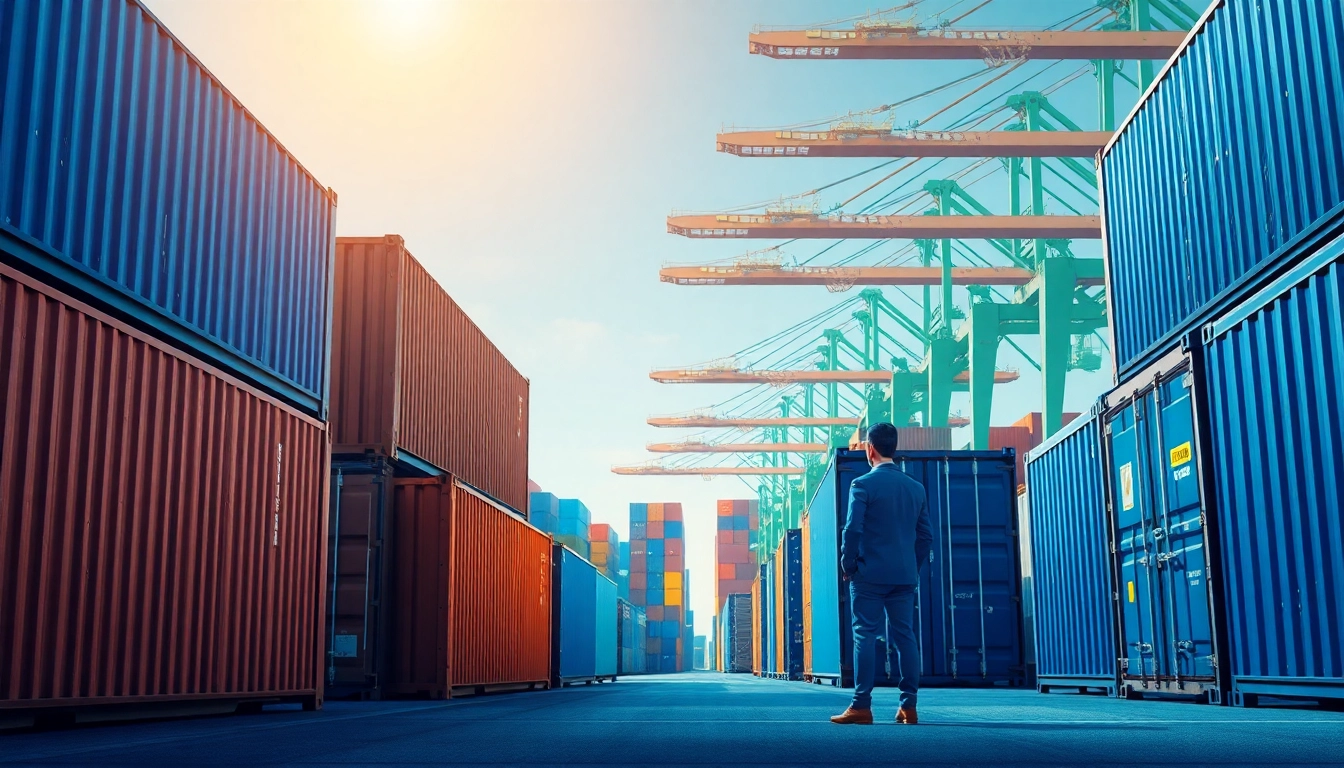What are Export Tariffs?
Definition and Overview
Export tariffs are fees imposed by a government on goods being exported out of a country. Primarily, these tariffs are levied on goods and raw materials and serve as a form of taxation on exporters. Unlike import tariffs, which are more commonly discussed in global trade, export tariffs apply to goods leaving a country and are typically paid by the exporter. The export tariffs can significantly affect the cost of goods sold internationally, shaping global trading dynamics.
Types of Export Tariffs
Export tariffs can be classified into various types based on their purpose and how they are structured. Here are the key categories:
- Ad Valorem Tariffs: These are calculated as a percentage of the value of the goods being exported. For example, a 10% export tariff on a product valued at $100 will result in a $10 tariff.
- Specific Tariffs: This type is levied based on a specific amount per unit of the exported goods, regardless of their value. For instance, an export tariff of $5 per ton on steel would mean exporters pay $5 for every ton they export, regardless of the overall market value.
- Compound Tariffs: This method combines both ad valorem and specific tariffs. It calculates the tariff as a percentage of the value and a fixed charge based on quantity or weight.
Purpose and Economic Implications
The primary purpose of export tariffs is to generate revenue for the government while managing the export of specific goods. Countries with abundant natural resources often implement export tariffs to ensure domestic consumption or to maximize profits by limiting the supply to international markets. Economically, export tariffs can alter international pricing structures, affect demand for domestic goods abroad, and shape global competitiveness.
Impact of Export Tariffs on Businesses
Cost Structure and Pricing Strategies
Export tariffs significantly impact a company’s overall cost structure. Businesses must account for the added expenses in their pricing strategies. For instance, companies exporting goods may face higher operational costs, compelling them to raise prices to maintain profit margins. Alternatively, businesses may choose to absorb the cost, which can lead to margin erosion in highly competitive markets where price sensitivity is critical.
Competitive Disadvantages
Export tariffs can create competitive disadvantages for businesses, particularly in sectors reliant on international sales. Companies in countries with higher tariffs may find it challenging to compete in foreign markets against local producers who face lower or no export tariffs. This disparity can lead to reduced market share, especially if competitors can offer similar products at lower prices.
Case Studies of Affected Industries
Across various sectors, the imposition of export tariffs has produced notable case studies. The steel industry in the United States faced significant challenges during the Trump administration when substantial tariffs were enacted. As a result, U.S. steel exporters saw both increased prices domestically and a decline in competitiveness in international markets as foreign producers capitalized on the opportunity to fill the supply void.
Another example is the agricultural sector in Canada, where tariffs on canola oil exports impacted farmers significantly. As tariffs rose, Canada’s canola oil exports to countries like China fell noticeably, forcing producers to reassess their global strategies and explore new markets to mitigate losses.
Export Tariff Regulations and Compliance
Understanding Regulatory Frameworks
Export tariffs are governed by a variety of regulations that vary by country. Understanding these frameworks is crucial for businesses that engage in international trade. In the U.S., for example, the Constitution prohibits export taxes, impacting how exporters strategize their operations. On the other hand, countries with a free-market approach may impose export tariffs on certain strategic commodities to bolster domestic markets.
Best Practices for Compliance
To navigate the complexities of export tariffs, companies should adopt best practices such as:
- Staying Informed: Keep abreast of current tariff rates and trade agreements that may affect your business.
- Consulting Trade Experts: Engaging with customs brokers or trade compliance experts can help ensure adherence to local and international regulations.
- Implementing Comprehensive Documentation: Accurate record-keeping of export transactions and compliance with tariff regulations is essential to avoid penalties.
Consequences of Non-Compliance
Failure to comply with export tariffs can lead to severe consequences, including hefty fines, penalties, and even the suspension of export licenses. For instance, companies that neglect proper tariff classification in their customs documentation risk delays in shipments and can face audits from regulatory bodies, potentially damaging their reputation in international markets.
Global Perspectives on Export Tariffs
Comparative Analysis of Tariff Policies
Different countries approach export tariffs with varying philosophies, impacting their respective economies. Countries like Australia, with a strong trading position, often refrain from imposing export tariffs, believing that open trade fosters economic growth. In contrast, nations like India frequently employ export tariffs on essential commodities to safeguard their markets from volatility and to stabilize local prices.
Impact of Trade Agreements
Trade agreements can significantly affect export tariff rates. Agreements such as the USMCA (United States-Mexico-Canada Agreement) encourage tariff reductions or eliminations among member countries, fostering greater trade relations. Companies must thoroughly understand the implications of such agreements on their export strategies to leverage potential benefits.
Responses to Tariff Changes
Businesses respond to changes in export tariffs through various strategies. Some may opt to relocate operations to countries with more favorable tariffs, while others may focus on lobbying for policy changes that benefit their industry. For instance, during periods of rising tariffs, affected manufacturing sectors may band together to push for legislative changes, showcasing the power of collective action in influencing trade policy.
Future Trends in Export Tariffs
Predicted Regulatory Changes
Looking ahead, export tariffs are likely to evolve due to increasing global economic interdependence. As trade tensions between major economies persist, there may be a push for more nuanced tariff regulations that account for environmental and social considerations. For instance, countries may implement tariffs aimed at promoting sustainable practices or reducing carbon footprints in a bid to combat climate change.
Influence of International Relations
The dynamics of international relations will play a crucial role in shaping export tariffs in the coming years. Diplomatic negotiations and geopolitical strategies contribute to the establishment of trade agreements that can facilitate or hinder the imposition of tariffs. Countries engaged in tense relations are more likely to impose retaliatory tariffs, impacting exporters.
Strategies for Adapting to New Tariff Landscapes
As export tariff landscapes change, businesses need to adopt flexible, responsive strategies. This adaptability may include diversifying supply chains to mitigate risks or investing in technology to better analyze tariff implications on operations. Companies that actively engage in scenario planning can better prepare for varying tariff environments, positioning themselves as resilient competitors in the global market.


